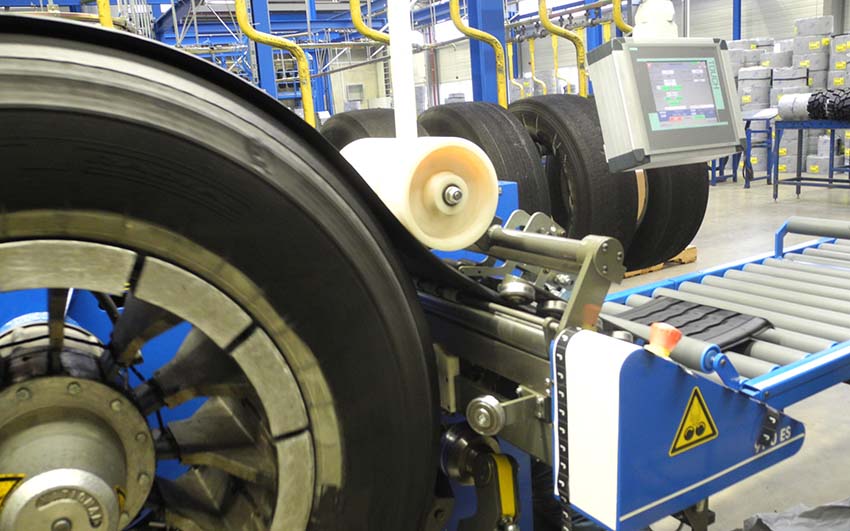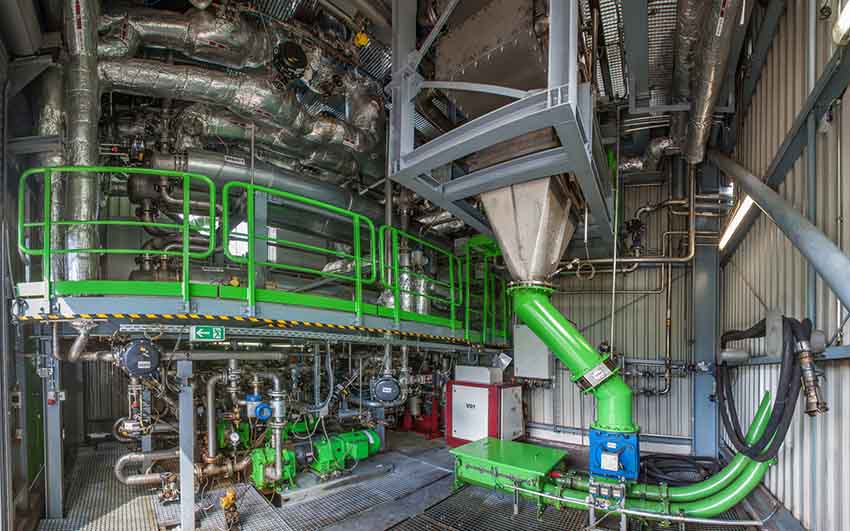Allianz Zukunft Reifen (AZuR) is a Europe-wide organization aiming to achieve a sustainable circular tire economy. The goal is to reuse or recycle 100 percent of end-of-life tires wherever possible to avoid waste, cut CO2 emissions, conserve natural resources, and protect people and the environment.
Interview with Christina Guth, Network Coordinator at Allianz Zukunft Reifen (AZuR).
Easy Engineering: A brief description of the organization and its activities.
Christina Guth: Illegally dumping and burning used tires cause tremendous environmental and climate impacts. Each year, around 550,000 metric tons of waste tires accumulate in Germany. The average half-life of a tire is 2,000 years. As more of these tires can be repaired, retreaded, recycled, or chemically treated, the better it is for people, the climate, and the environment.

AZuR is committed to an ELT-circular economy offering shortened logistics chains and transportation routes, yielding tangible environmental, regional, and employment benefits. In Europe, around 3.4 million waste tires are disposed of each year, and these should be either locally repaired, retreaded, or recycled/chemically reused by specialized companies.
Scientifically based studies and research provide valuable impetus for closing the material cycle. In an interdisciplinary team effort, new approaches and solutions for an ELT-cycle that makes sense both ecologically and economically are being developed. In the process, Universities in the AZuR network have a unique role.
E.E: What are the main areas of activity of the organization?
C.G: It is necessary to have the support of politicians to reach these goals. The problem awareness for the environmentally friendly handling of waste tires is deepened with the help of advocacy work and face-to-face meetings with political decision-makers, demanding that legislative initiatives for sustainable scrap tire recycling receive support.
AZuR is committed to the eco-friendly reuse and recycling of tires over all distribution channels. Over 50 AZuR members from industry, commerce, and science cover all sectors of the tire recycling economy – including the certified collection of used tires, their repair and retreading, and material and chemical recovery of raw substances in used tires.
It has been proven that retreaded tires have the same quality, safety, and mileage performance as new tires and deliver obvious ecological and economic benefits. Compared with new tires of comparable quality, their production generates more than 60 percent fewer CO2 emissions. The production of retreaded tires requires around two-thirds fewer raw materials and around 50 percent less energy.
The rubber from used tires is recycled in an eco-friendly process into rubber powder and rubber granulate (ELT), used by AZuR partners for a variety of sustainable products – from resilient flooring for playgrounds and sports fields to long-lasting, rubber-modified asphalt and weather-resistant protection mats used in rooftop greening and photovoltaic installations.

Devulcanization or pyrolysis processes break down used tires into their components. The pyrolysis process recovers valuable raw materials for industry, such as pelletized industrial carbon black. Any rubber recovered by these processes can partially be used to produce new tires without any loss of quality.
E.E: What’s the news for 2023 about new directions?
C.G: During 2023, AZuR aims to attract new partners from industry, commerce, and science as it continues to increase the network’s clout while advancing the tire recycling economy. In collaboration, the network strives to develop innovative solutions and processes for the eco-friendly end-of-life reuse and recycling of used tires.

Within the next five years, AZuR strives to raise the retreading rate of used tires for commercial vehicles from 30% to 40%. For passenger car tires, the aim is to improve the retread rate from 1% to 10%. Reaching these targets requires greater awareness among manufacturers and consumers of retreaded tires’ benefits.
Additionally, AZuR is dedicated to improving the quality of carcasses for new tires in 2023 to ensure that a more significant number of end-of-life tires are retreaded. As more new tires are equipped with high-quality carcasses, the number of tires that can be retreaded will increase.
AZuR also aims to reduce concerns over the use of retreaded tires and products made from recycled tires by providing scientifically proven data and education, as well as raising the acceptance of the usefulness of retreaded tires in industry, commerce, and the broader public.
E.E: What can you tell us about market trends?
C.G: The aftermath of the Russian war, soaring (energy) prices, and tightening supply bottlenecks have dampened the mood of consumers in the past year and negatively impacted the automotive sector. The development of tire sales in the aftermarket sector mirrors this trend.
For the German (rubber) industry, this is expected to lead to a challenging 2023 fiscal year. Despite this, the prevailing mood in the sector is still reasonably stable and slightly positive, based on a report by the Bundesverband Reifenhandel und Vulkaniseurhandwerk (BRV – Federal Association of Tire Dealers and Vulcanizers).
According to AZuR 2023, the increasing importance of sustainability, environmental, and climate protection should positively impact demand for retreaded tires and recycled products from used tires’ materials and chemical recycling.
A transformation process is underway throughout the entire economy to move away from a linear approach toward a circular one in resource use, which AZuR is also pursuing. Creating a circulatory economy is vital in reaching climate goals while achieving resource and sustainability goals.
Topics around zero waste, recycling, or end-to-end use of resources in 2023 (beyond the tire/recycling industry) are gaining more economic and political momentum globally.
E.E: What estimations do you have for 2023?
C.G: AZuR partners continue to develop products, machines, solutions, and processes for the world market in 2023, adding a global dimension to the network. Research commissioned by AZuR has a resonance on an international scale.
Tires in global traffic and transport will remain indispensable in 2023. There are considerable quantities of used tires worldwide that may be carelessly disposed of or incinerated in many regions, with negative consequences for people and the environment. In addition, many industrialized countries are exporting end-of-life tires to the developing world, reinforcing AZuR’s position that action is needed.
For the world, the AZuR model of a sustainable tire circular economy is a blueprint for action. The AZuR vision is to reuse or recycle 100 percent of end-of-life tires, which should set the standard for the rest of the world. However, retreading and recycling activities have to be local. Enormous amounts of resources can be preserved, CO2 emissions reduced, and waste avoided with a global tire cycle.


